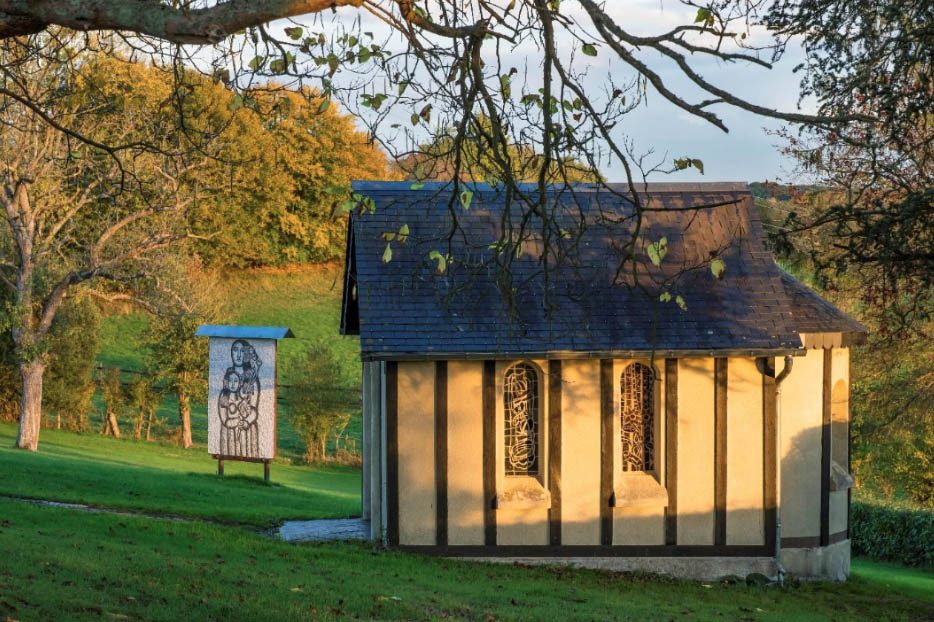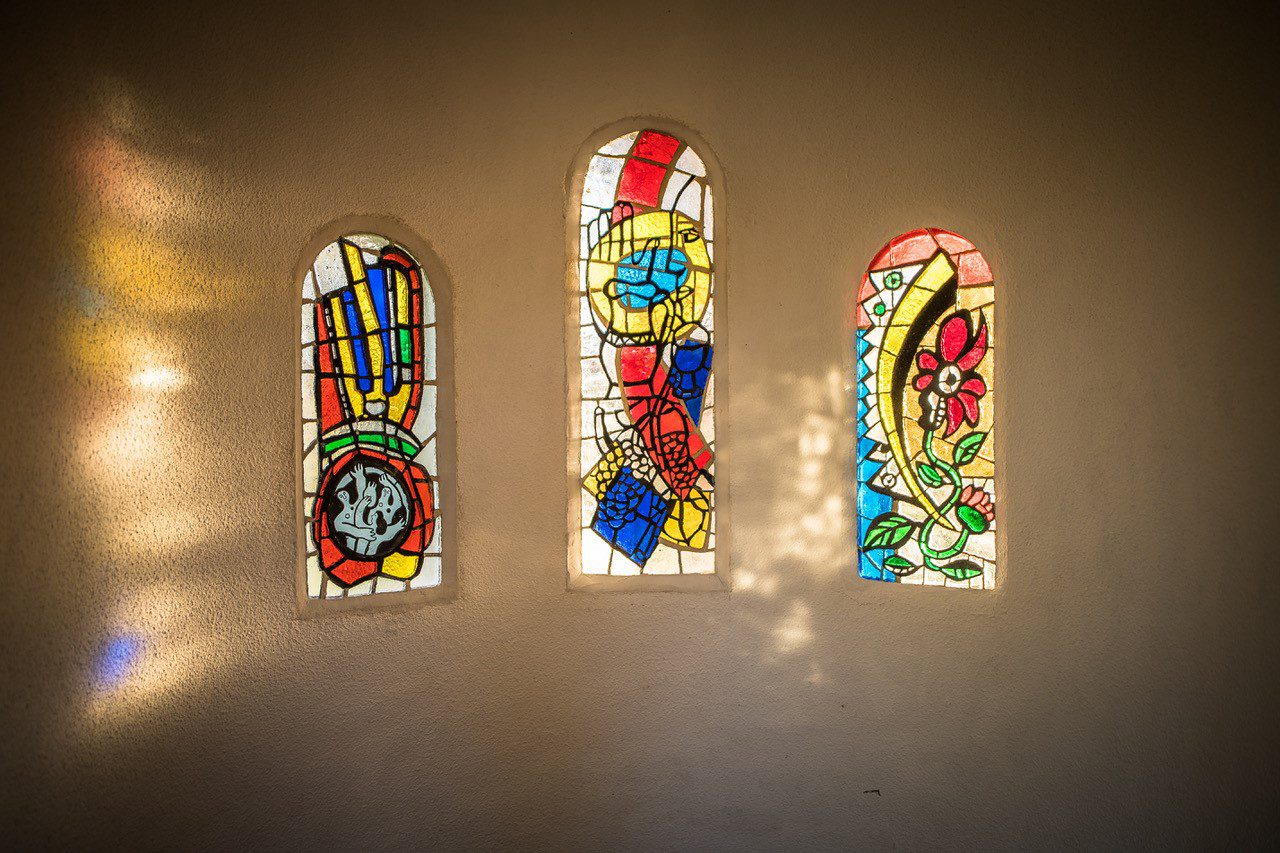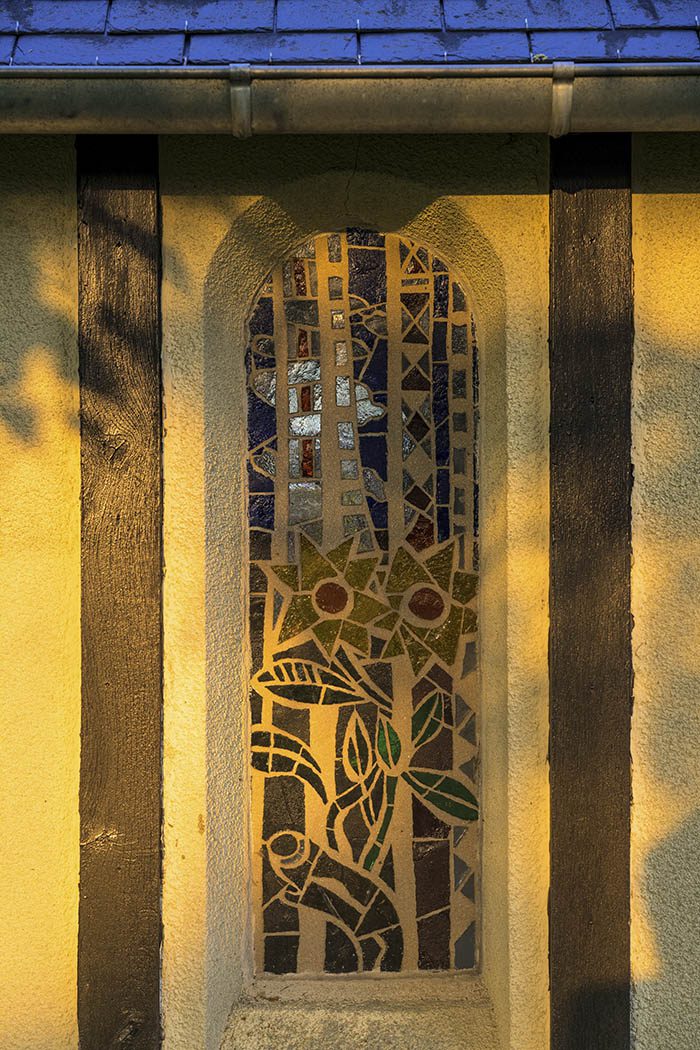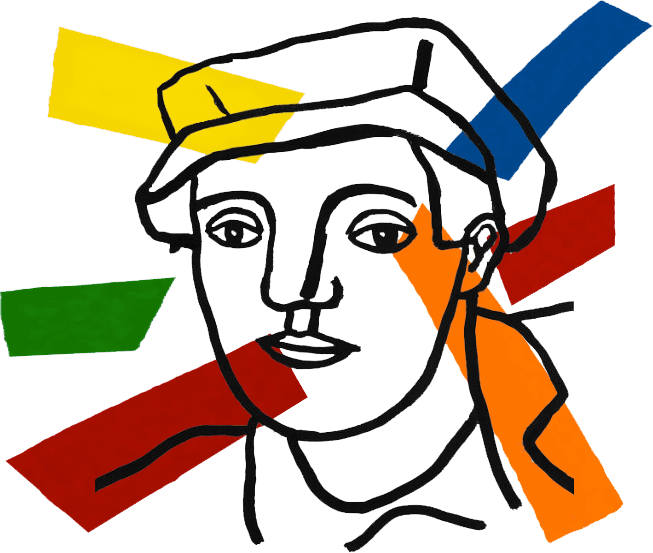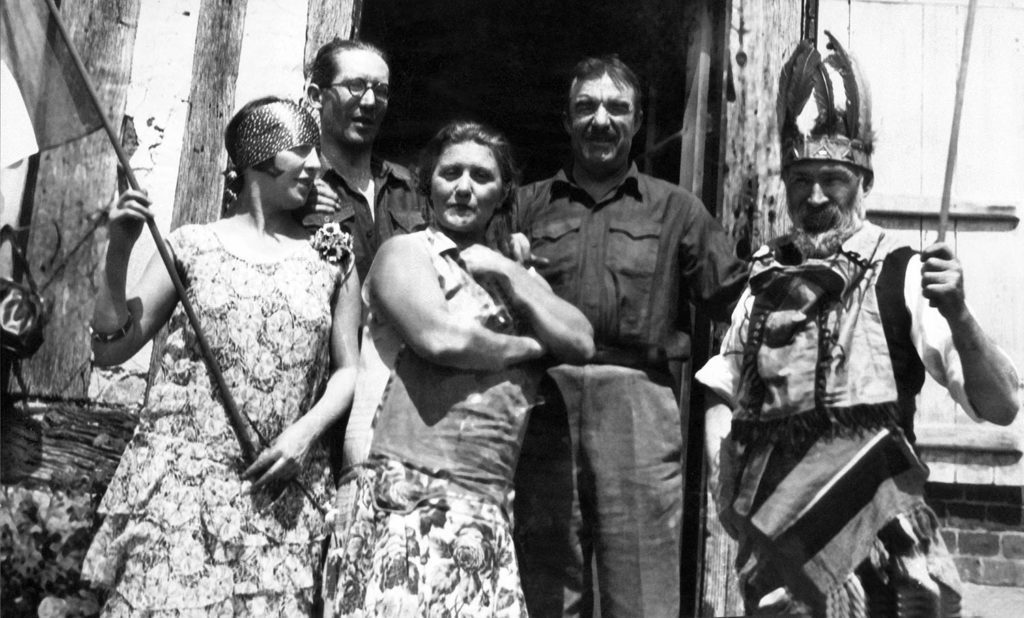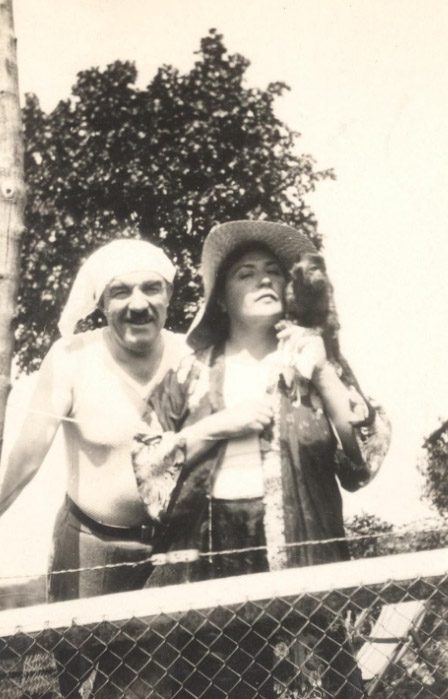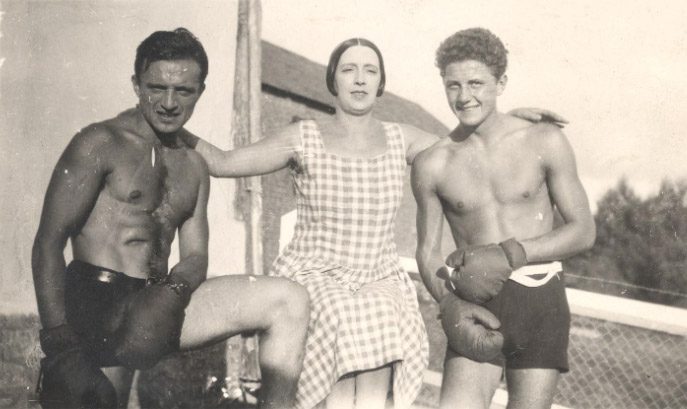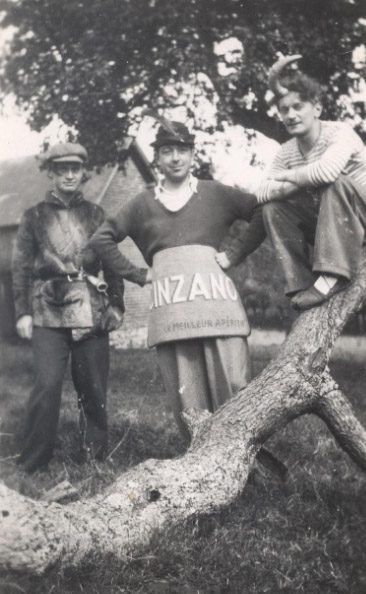On the border of Calvados and Orne, in a secluded south-facing valley located in the municipality of Lisores, Bougonnière stands as a unique place. An ocean of meadows, a shaded river, vibrant nature, and above all, a story…
FERNAND LÉGER’S FARM
Walking in Fernand’s footsteps is an unparalleled experience. The team of enthusiasts involved in the restoration work is forever imbued. Jean du Chatenet, expert of the Léger Committee and custodian of the place, shares:
"I now realize how much our work was initiatory: Unearthing roots, collecting flints, pruning hollies, cleaning the half-timberings, burning tree trunks, observing the undulating landscape, the poplars, the flowers… And near the house, brushing past Fernand Léger’s beloved lime tree as he himself would touch it every morning before creating his preparatory gouaches for so many avant-garde masterpieces (this anecdote is recounted by Blaise Cendrars).
Each of our actions was but a repetition of those Fernand Léger had done before us, each of our gazes went in the same direction, rested on the same things. Entering Lisores is to enter the heart of Fernand Léger, to understand his effective and physical simplicity.
All his work stems from here. For me, it’s fundamental, it’s primary. There’s the large mosaic (on the facade of a building), the chapel (whose stained glass windows were made by the artist), the half-timberings found throughout his painting, nature, vegetation, it’s paramount. This farm is the foundation. When you love Léger’s painting, you have to come here."
Lisores: Where It All Begins
Lisores: Where It All Begins
Lisores: Where It All Begins
Lisores: Where It All Begins
The Norman hedgerow landscape is inhabited by Fernand Léger. A significant part of his inspiration is attached to it, a quite unique vocabulary where flowers, roots, herbs, and skies, whether gray or blue, continue to recur in his work and teach us the strength of his Norman roots.
More than a workshop, Lisores was for Léger a laboratory. It was here that Léger came to recharge. He worked here throughout his life.
The slowness and tranquility of Lisores soothed the man and the artist, and it is in this contrast between the monumentality of his work, its strength and its excess, that lies the keystone of Fernand Léger’s aesthetics: between Paris, with its mechanical and industrial modernity and perpetual movement, and Lisores, a rural and isolated valley immersed in silence, an alchemy was born of which a great part of his work bears the imprint.
A well-deserved nap… Fernand wears the Canadian lumberjack shirt gifted by his friend Alexandre Calder.
The Tale of the Large Trash Bin… Not So Trivial After All!
The Tale of the Large Trash Bin… Not So Trivial After All!
The Tale of the Large Trash Bin… Not So Trivial After All!
The Tale of the Large Trash Bin… Not So Trivial After All!
It was in this modest farmhouse, which he inherited from his mother in 1922, barely functional, without running water, with its single large hearth, his worktable placed right in front to prevent anyone from passing behind while he worked, and a large trash bin effectively blocking the way, that Fernand, a tremendous worker, became the ‘avant-garde peasant.’
The significance of the infamous large trash bin found in all the archive photos cannot be overstated. After burning his workshop in 1909 to mark his break with post-impressionism, he maintained the habit of having a large trash bin by his side into which he would throw his drafts.
Thus, all these paper works that have reached us today, have escaped the large trash bin. If Fernand didn’t destroy them, it’s either because they contained elements that could be reused in future compositions or because he regarded them as studies that could be considered complete, works in their own right, representing more than a study: a state.
These were the ones Fernand Léger was a little too inclined to give away to visiting friends or sell at a low price, to please.
The workshop in Lisores and the large trash bin in the bottom left. Patrice Samson, grandson of Fernand Léger’s farmers who kept a copy of the lease his grandparents had signed with the painter, recalls coming with his father as a child to use it for patching the window holes…
(Photographic Archives of the Léger Committee)
The Friends’ Meeting Place
The Friends’ Meeting Place
The Friends’ Meeting Place
The Friends’ Meeting Place
Fernand cherished loyal friendships. It was only natural that he shared Lisores with all his friends in generous simplicity. The list is long: Brancusi, Blaise Cendrars, Darius Millau, Robert Desnos, Louis Aragon, Jacques Prévert, Le Corbusier, Charlotte Perriand, but also a whole band of merry fellows like the Fratellini brothers or the 3 Marcello brothers, famous tightrope walkers of the Cirque d’Hiver.
It resembled a true Noah’s Ark, with a multitude of animals… including Bibi, the little capuchin monkey belonging to Jeanne…
For atmosphere, here goes a good joke recounted by Fernand:
“One afternoon, I had shown the Fratellini brothers some tomatoes that were starting to turn pink in the small garden behind the house. I was proud of my tomatoes and eager to see them ripen. So, the very next morning, I went back to see them. Imagine my surprise: from pink, my tomatoes had turned red, all without exception. I couldn’t believe my eyes and was baffled. Until, behind me, I heard the muffled laughter of Le Corbusier and the Fratellini. The mystery was immediately clear. In the night, by the dim light of a poor lantern, they had covered, one by one, my tomatoes, my beautiful tomatoes, with a beautiful vermilion red!
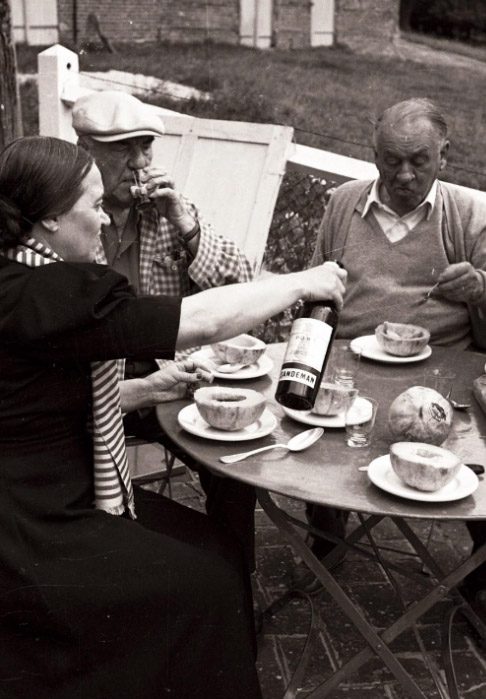
A summer Sunday meal in ’54: Blaise Cendrars, Nadia, and Fernand Léger
The Fernand Léger Farm Museum
The Fernand Léger Farm Museum
The Fernand Léger Farm Museum
The Fernand Léger Farm Museum
In 1946, Daniel Wallard recounted his surprise at the modest comfort of the place, which Fernand perfectly adapted to: ‘The farm was quite tiny, featuring an attic fitted beneath the slate roof; access for a car was challenging, with the metal gate left open, necessitating a descent through the fields to the house, along a winding and rain-gullied path. This little Norman house lacked comfort, the poorly distributed water was from a cistern, and had to be conserved., there was no telephone, cooking was done with butane or in the wood-burning fireplace. Léger didn’t care, his wife (Jeanne) told me, but there were wonderful shapes on a wall whitewashed with lime, I still see them. We forgot everything else…’
In 1946, Daniel Wallard recounted his surprise at the lack of comfort in the places that Fernand adapted to perfectly:
“The farm was very small with an attic under the slate roof, access was difficult for a car, the metal gate open, you had to go down through the meadows, to the house, by a winding path and ravished by the rains. This small Norman house lacked comfort, the water which was poorly distributed was water from a cistern and it had to be taken care of, there was no telephone, cooking was done with butane or in the fireplace wood fire. Léger didn't care, his wife (Jeanne) told me, but there were lots of wonderful shapes on a whitewashed wall, I can still see them. We forgot everything else…”
After Fernand Léger’s death, Nadia made the house more comfortable… She had a bathroom installed on the advice of Le Corbusier (reminiscent of the one in Poissy) and a kitchen whose furniture had been designed by a certain Charlotte Perriand…
On February 4, 1969, André Malraux inaugurated the National Museum Fernand Léger National Museum in Biot, entirely financed with Nadia Léger’s own funds and donated to France with its incredible collection of masterpieces.
With this first duty accomplished, the tireless Nadia could now dedicate herself to Lisores to turn it into a small museum. She ended the farming activities and embarked on the works of the ‘Farm-Museum.’ And there was much to do, according to Daniel Wallard! Creating a winding paved access road, a large parking lot where coaches could turn around, and transforming the buildings.
Nadia Léger and Georges Bauquier, on the day of the Farm Museum inauguration on xx September 1970
The farm remained the dwelling house; the old summer workshop became the caretakers’ house; the barn was converted into a museum and the distillery-bread oven into a chapel as expressly wished by Léger.
On the museum’s gable wall is the emblematic ‘The Farmer and the Cow’ mosaic. Seeing it for the first time amidst the pastures remains an unforgettable experience.
This glass paste and marble pieces mosaic covering a 45 m² surface was created by the Melano couple from a gouache that Fernand had gifted to Maurice Thorez.
Marc driving Nora, the Percheron, the true guardian of the place
The farm remained the dwelling house; the old summer workshop became the caretakers’ house; the barn was converted into a museum and the distillery-bread oven into a chapel as expressly wished by Léger.
On the museum’s gable wall is the emblematic ‘The Farmer and the Cow’ mosaic. Seeing it for the first time amidst the pastures remains an unforgettable experience.
This glass paste and marble pieces mosaic covering a 45 m² surface was created by the Melano couple from a gouache that Fernand had gifted to Maurice Thorez.
